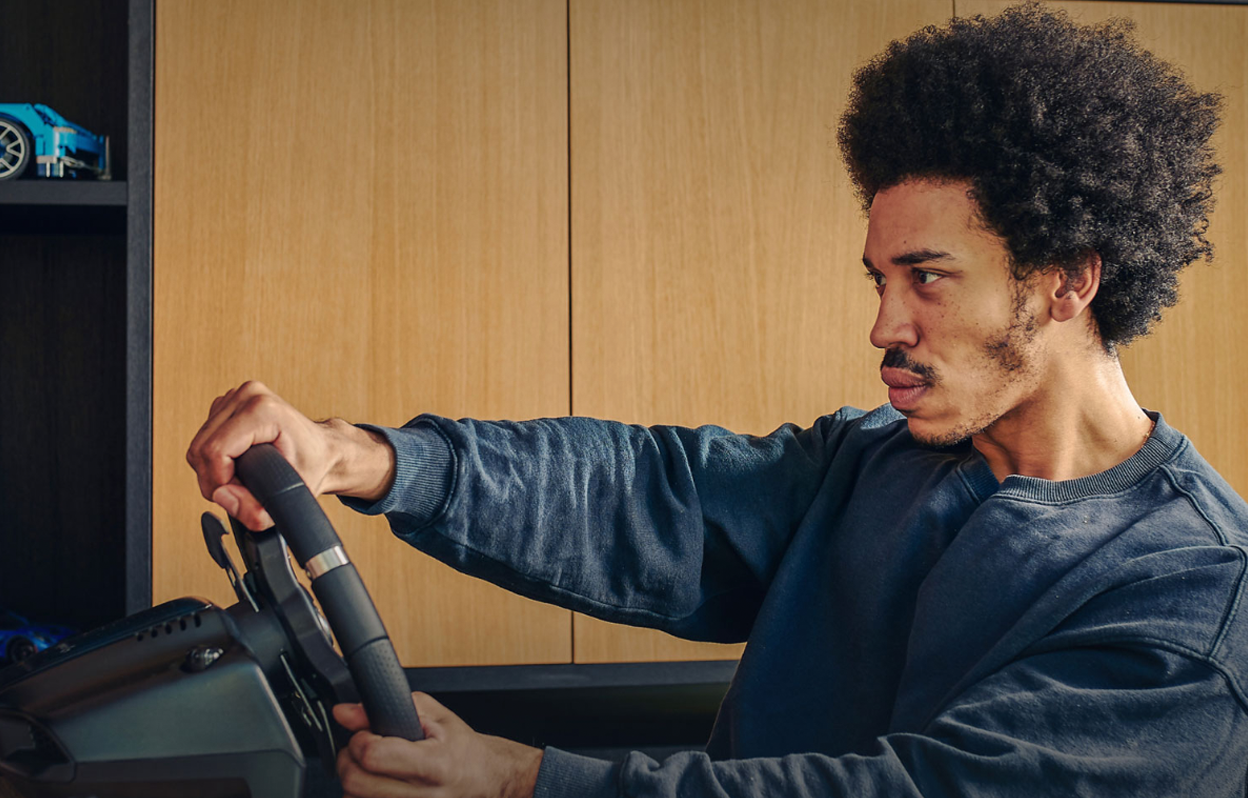In Honey, I’m Home, creator-designers Alaine Hutton and Lauren Gillis introduce us to a unique brand of dissociative hell.Eden Graham/Factory Theatre
- Title: Honey, I’m Home
- Written and directed by: Lauren Gillis, Alaine Hutton
- Consulting director: Adam Lazarus
- Actors: Lauren Gillis, Alaine Hutton, Angela Blumberg
- Company: Lester Trips (Theatre), presented by Factory Theatre
- Venue: Factory Theatre, 125 Bathurst Street
- City: Toronto
- Year: To Dec. 1, 2024
Wouldn’t you rather be somewhere else?
Modern life inexorably pulls us in several different directions at once, fragmenting our attention between digital and physical spaces. Tasks are never-ending, multiplying even as aspects of our jobs automate. After the pandemic demonstrated for most office workers that their jobs were easy to perform remotely, many resented having to return to the office when home beckoned.
In Honey, I’m Home, creator-designers Lauren Gillis and Alaine Hutton, with consulting director Adam Lazarus, introduce us to a unique brand of dissociative hell. Playing multiple roles, including multiple aspects of the same person, Gillis and Hutton deliver a relatable 65-minute satire about fragmented identity which gradually becomes a gaping maw of darkly surreal body horror.
First, a nun (Gillis) with a rictus smile shows off her blank-faced charge (Hutton), found existing in a storage unit with idiopathic catatonia, a complete shutdown with no clear point of origin. Outfitted in a slightly outsized Sister Nurse uniform, the sickeningly cheerful singing nun caresses her patient’s face, inviting us to croon along to reach a woman clearly twitching in impotent agony. That woman is “still in there,” the religious representative from the Forget Me Not organization assures us. Whether she’ll ever come out is another matter entirely.
Office drone Janine, on the other hand, longs for nothing more than to leave. The only worker left in her physical workplace, there to meet safety requirements, Janine (also Hutton) adopts a posture that would make an ergonomics specialist cry as she lies face-down on set consultant Helen Yung’s mysterious horizontal desk contraption. Her face completely obscured by a curtain of hair, Janine shudders through another day of agonizingly slow clicking while her former tasks are performed by machines.
Playing multiple roles, including multiple aspects of the same person, Gillis and Hutton deliver a relatable 65-minute satire about fragmented identity which gradually becomes a gaping maw of darkly surreal body horror.Eden Graham/Factory Theatre
When Janine finally gets home, a list of household chores swirls so frantically in her head that she achieves nothing; even the simple action of placing her coat on the coat rack becomes oppressive as she immediately gets distracted by more pressing concerns. When she’s offered a chance to upload her consciousness (played by Gillis) into a “dual presence system” that will allow her to pilot an avatar (Hutton) around her home while her body stays at work, Janine jumps at it. After all, it’s covered by her workplace benefits.
Unfortunately, in a bleakly funny sequence, Janine quickly discovers the limitations of her second life, complete with unhelpful tech support, a steep and disorienting learning curve for her physical body, invasive advertising, and the inability to affect her home in any way outside the virtual realm. The most exciting feature seems to be that, in digital space, no one can hear you scream.
Meanwhile, there’s a disturbing presence (Angela Blumberg) on the fringes of her consciousness, appearing and vanishing to S. Quinn Hoodless’s pulse-pounding soundtrack of original music and early 90s dance hits.
Gillis and Hutton display an effective connection as aspects of the same person, Gillis trapped behind a white wall with only a small cutout for her head allowing her to perceive her avatar’s travails. Smooth transitions in sudden blackouts add to the already high disorientation factor of the experience, Hutton soundlessly moving from her position in the torturous office chair to Janine’s home in an instant.
Andre Du Toit’s skillful lighting adds dimension and mystery to Hutton’s already strikingly spasmodic motions, contrasting the artificial brightness of the online sphere with a smokier, earthier physical plane.Eden Graham/Factory Theatre
Lazarus and movement coach Denise Fujiwara combine their Bouffon and Butoh training, the latter form’s influence clear in Janine’s increasingly slow, grotesque movements. In one scene, she slowly pries herself out of her horizontal working position like a woman possessed, while audible creaking noises enhance the sluggish, tortured movements, as if her entire body had become a piece of leather.
Andre Du Toit’s skillful lighting adds dimension and mystery to these already strikingly spasmodic motions, contrasting the artificial brightness of the online sphere with a smokier, earthier physical plane. In an extended sequence where Janine’s physical body breaks free and propels itself across the stage with erratic sinuousness, Du Toit’s red-tinged lighting seems to hug the body, outlining it while leaving little else visible.
What’s most arresting about Honey, I’m Home is its descent from relatable jokes about work and technology into something truly disturbing, presented without a hint of irony and with an admirable commitment to the bizarre. When the jokes stop, they stop, and there’s nowhere to hide from the skin-crawling feeling of detachment and nausea. The slow, stylized horror is an acquired taste, as is the open-ended nature of Janine’s fate, inviting interpretation rather than closure.
However, with recent news that Factory’s board is currently exploring selling its building to developers, one more spectre of displacement only adds to the communal feeling of terror as we watch Janine slowly fall apart, no comfort arising from her digital world of limited possibility. In a physical space, at least, someone can hear us scream.
In the interest of consistency across all critics’ reviews, The Globe has eliminated its star-rating system in film and theatre to align with coverage of music, books, visual arts and dance. Instead, works of excellence will be noted with a critic’s pick designation across all coverage. (Television reviews, typically based on an incomplete season, are exempt.)






/cdn.vox-cdn.com/uploads/chorus_asset/file/25606861/STK445_ADVERTISING_STK093_GOOGLE_B.jpg)







